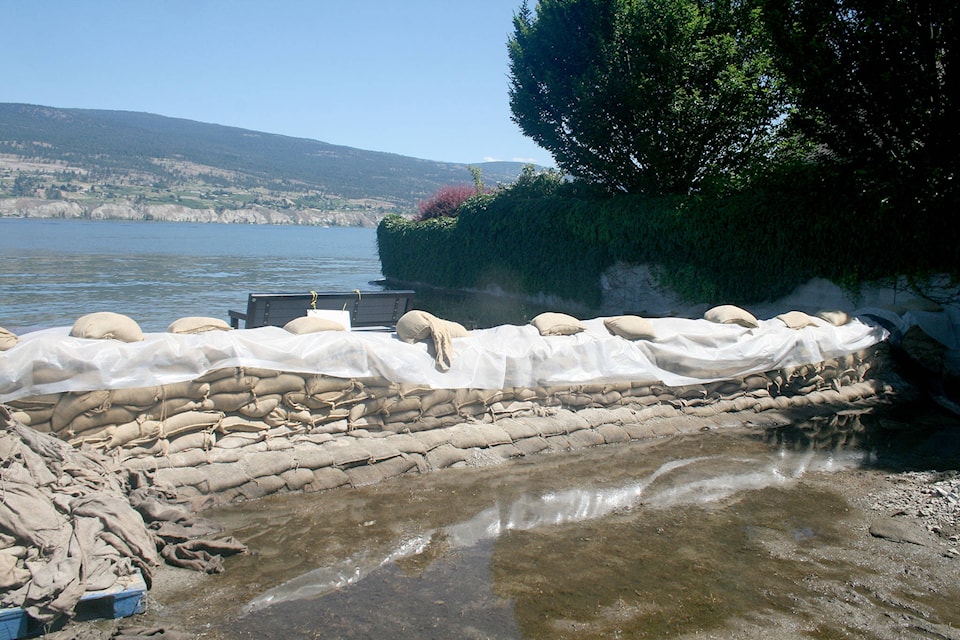Sandbags will begin to be removed from private properties in Kelowna and West Kelowna no longer under threat of flooding.
The removal areas will be expanding into Lake Country, Peachland and areas along Westside Road in the coming week.
In Kelowna, local contractors will access waterfront properties to accommodate the removals of sandbags in the South Pandosy area from Lake and Royal Avenues. A staging area has been established at the end of Cadder Avenue in front of the beach access, according to a Central Okanagan Emergency Operations release.
In West Kelowna, sandbag removals will occur in the Pritchard, Whitworth, Gellatly and Green Bay neighbourhoods.
Gellatly Road is now fully open, according to the City of West Kelowna.
Schedule of work is expected Monday through Friday from 7 a.m. to 3:30 p.m. until the end of August.
Waterfront property owners outside of these areas removing their own sandbag walls should keep them at a level that protects against wind and wave action, according to the CORD release.
Notification will be done through on-street signage and public service announcements to provide as much warning possible when crews are expected to complete removals on private property.
Precautions should be taken while removing sandbags and working around stagnant water. Sandbags that have been sitting in water could contain mould. Residents should wear N95 respirators, nitrile gloves and rubber boots while working and should wash hands and clothes well after handling the bags, said the CORD release.
Residents can continue to support flood recovery efforts by bringing sandbags to the street front for pickup and disposal. Burlap and polypropylene bags should be divided into separate piles at the curb.
To make sure sandbags are recorded for pick up, Emergency Management BC has provided a sandbag recovery application.
Under no circumstances should sandbags be emptied into any creeks, lakes, wetland, beaches or other watercourses as outlined in the Water Sustainability Act. The impact can destroy fish habitat and affect drinking water supply, infrastructure, flood control, navigation and recreational activities.
